COVID Lies – Part 1
4 June 2024
The list of lies regarding COVID-19, the “pandemic” and subsequent Government interventions is now so long a single article cannot possibly cover them all. The list of things that weren’t lies or “they” got right about it though is here…
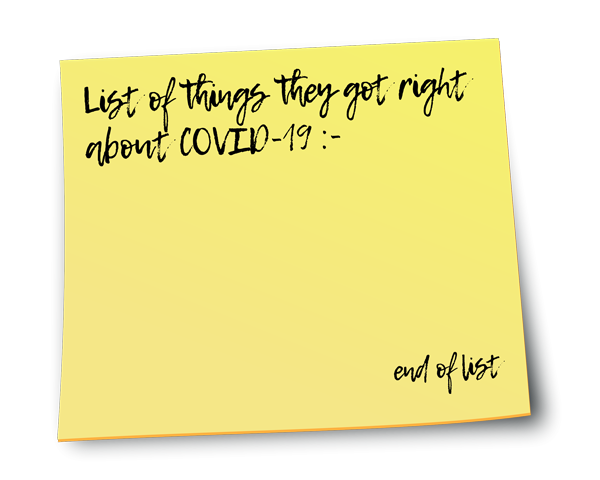
Because the full list of lies, misrepresentations, wilfully ignorant statements etc. is now so long, we will distil it down and just cover key aspects of the worldwide approach to tackling what we were told was COVID-19, which we were told was caused by a “novel” and extremely contagious virus called SARS-CoV-2, and we will be doing this in a series of articles, hence the “Part 1” in the title.
For the purposes of demonstrating just how bad this all is, we will pretend that SARS-CoV-2 is real, which it isn’t, and we will pretend COVID-19 is a new, real disease, which it isn’t. Proof of those statements being true is available, just not in this article. The purpose of this is to show that, even if it was all real, literally every single measure, intervention and so on, was designed to make things worse, and did.
Factor in the reality that even the existence of the virus and the disease claimed to be caused by the virus are also lies, and that the excess deaths have almost all been the result of deliberately implemented policy and medical intervention, that just puts the scale of the crimes off the charts.
Of course, we’re not claiming no-one was ill, and no-one died, but pretty much everything about how things were reported was outright fabrication, and how things were handled was designed to make things worse for the average person while enriching billionaires, foundations and corporations, granting unrestrained power to Governments and furthering the progress of out-in-the-open agendas of globalist organisations. None of that is even seriously debatable, it is a plain statement of fact verifiable in a multitude of ways.
Iatrogenisis
There is a word, iatrogenic, which (according to Wikipedia) means…
“causation of a disease, a harmful complication, or other ill effect by any medical activity, including diagnosis, intervention, error, or negligence“
…and the article goes on to explain that death would be included in the list of “ill effects”.
It is interesting to note that what is being termed “the iatrogenesis hypothesis” is gaining some traction. Some notable names giving this airtime now are Dr. John Campbell (a retired nurse teacher and A&E nurse, who has a YouTube channel with 2.7 million subscribers), Professors Norman Fenton and Martin Neil from Queen Mary University of London, and John Dee who has previously worked for the NHS and as a G7 government scientist.
I should point out that those people mentioned, Campbell, Fenton, Neil and Dee all appear at this point to believe SARS-CoV-2 (the virus) is real and COVID-19 is the real disease caused by SARS-CoV-2 but they are now questioning the role COVID-19 played in relation to any spikes or increases in mortality versus implemented policies. That is their prerogative of course. If you go back a year or more though, John Campbell appeared to believe the mRNA vaccines were safe and effective. He does not believe that now because the evidence does not support that, and he has been looking at the evidence honestly, so people can and do change their stance on things, depending on what they look at and how entrenched they may be in their original position. For some it appears they are not questioning the virology side of things, perhaps because it falls outside their credentialed field of expertise, or that they simply don’t have the time to analyse another scientific domain, or maybe other reasons unknown.
This is not a criticism of Campbell et al, but an observation and a theory. I am very glad that people like that are looking at, and speaking up about the obvious discrepancies in the Official Narrative. The more brains applied to getting the truth out there and exposing the corruption and harms caused in the last three years the better.
There are others too of course who are now looking at things like the guidance and instructions that were being issued by Government departments to hospitals, doctors and care homes, plus data from hospitals, care homes etc. on occupancy, prescriptions and outcomes, in particular, death. And there are those who have been looking at this stuff for quite some time as much of this guidance documentation and raw data has been available for well over a year now and we looked at it here in considerable depth back in November 2021.
The only issue with the idea of “iatrogenesis” is that its definition means it is unintended, and it can be agreed that there are instances in genuine, well-motivated healthcare settings where an intervention can lead to harm, but had there been no intervention the outcome was guaranteed to be worse. The removal of a diseased organ can lead to loss of function, which is then considered iatrogenic, but to not have removed it would lead to further complications and/or death, so on balance the loss of function was the preferable option, carried out with the full informed consent of the patient. In specific, individual cases this is entirely justifiable. Yes, the “pandemic” interventions (lockdowns, isolation, health-care refactoring, masks etc.) were introduced ostensibly for the same reasons, except there was not just a lack of supporting evidence to justify them, there was already overwhelming evidence to refute them, and certainly no “consent” from the public, just diktats from State Approved Experts.
Here is one of many reasons why it appears the label “iatrogenesis” is perhaps sugar-coating what actually happened. Some Government “guidance” set out in early April 2020 included the document issued by the National Institute of Health and Care Excellence, unironically acronymised as NICE. This document, which has since been deleted from their website but is available (PDF) on an archived version of the page, starts with the big bold heading “Your responsibility” followed by this statement…
The recommendations in this guideline represent the view of NICE, arrived at after careful consideration of the evidence available. When exercising their judgement, professionals and practitioners are expected to take this guideline fully into account, alongside the individual needs, preferences and values of their patients or the people using their service. It is not mandatory to apply the recommendations, and the guideline does not override the responsibility to make decisions appropriate to the circumstances of the individual, in consultation with them and their families and carers or guardian.
Page 2 – https://web.archive.org/web/20200409054527/https://www.nice.org.uk/guidance/ng163/resources/covid19-rapid-guideline-managing-symptoms-including-at-the-end-of-life-in-the-community-pdf-66141899069893
As you can see, this opening paragraph simultaneously exhorts health professionals and practitioners to take the contents of this document “fully into account” and also to “make decisions appropriate to the circumstances of the individual”. Considering the amount of unnecessary, deliberately created panic and fear, coupled with the hierarchical structure of healthcare systems and the culture of not questioning those above you that is instilled during training, for many staff in care-homes and hospital wards, this document would be treated like a fifth gospel. As the population including those staff were pummelled with decrees by politicians and high-ranking health bureaucrats preaching their pseudoscience from literal pulpits, who was going to risk the responsibility of not applying the recommendations from this guideline?

The question then becomes, were the guidelines good, or in other words, were they guidelines that would, in the majority of cases, lead to positive health outcomes for the people that were to be the recipients of treatments based on them? Well we can take a look.
All very NICE
Hey, it’s their acronym.
The gn163 document from “NICE” is 19 pages long. It repeatedly pays lip service to things like supporting patient’s mental wellbeing, but then just instils more fear and isolation by advising no face-to-face communication and to push patients in the direction of support groups and charities, all of which would have either closed down entirely or would also refuse any face-to-face contact because the first UK lockdown began just days before this document was published, the 23rd March 2020.
Bearing in mind we’re supposed to be dealing with a respiratory illness that resembles “flu” and “colds”, so closely it required a “test” to know if you had it, you might be surprised to read the following sentence from this set of NICE guidelines…
“Sedation and opioid use should not be withheld because of a fear of causing respiratory depression”
The sedation and opioid use being referred to here is things like midazolam and morphine, and the document even notes that…
At the time of publication (April 2020), opioids and benzodiazepines did not have a UK marketing authorisation for this indication or route of administration
Page 13 – https://web.archive.org/web/20200409054527/https://www.nice.org.uk/guidance/ng163/resources/covid19-rapid-guideline-managing-symptoms-including-at-the-end-of-life-in-the-community-pdf-66141899069893
In other words, we are telling you to now do something you should never do, not for this set of symptoms or administered in this way.
If you’re wondering (like I was) who exactly approved these insane and previously never-used “guidelines” that cost thousands of the most vulnerable people their lives, a Freedom of Information request to NICE asking that very question garnered the following (in part) response:
NICE’s Guidance Executive is responsible for approving, on behalf of the Board, NICE guidance. This guideline (NG163) was approved at a Guidance Executive meeting on 27 March 2020. The following members of Guidance Executive were present:
• Andrew Dillon (chair) – Chief Executive
• Meindert Boysen Director – Centre for Health and Technology Evaluation
• Paul Chrisp Director – Centre for Guidelines
• Jane Gizbert Director – Communications
• Gillian Leng Deputy Chief Executive and Director – Health and Social Care
• Judith Richardson Deputy Medical Director and Programme Director – Quality and Leadership
• Mark Salmon Programme Director – Information Resources (deputising for Alexia Tonnel Director of Digital, Information & Technology)
Let’s take a look at that list of people…
Andrew Dillon
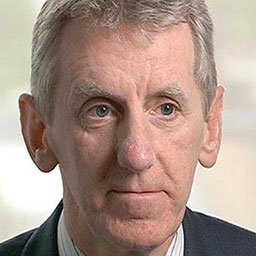
Sir Andrew Dillon was the Chief Executive of NICE from 1999 to 2020. According to the Health Service Journal, a self-professed website for “Healthcare Leaders”, in 2014 Dillon was ranked 26th in the “most influential people in health” leader-board these kinds of people are obsessed with, and according to the “Fierce Biotech” website back in 2012, Dillon was among “the 25 most influential people in biopharma today”, a list that also features the busiest woman in the world, Margaret Hamburg.
According to the UK Government website in 2015 he was being paid over £180,000 a year and according to Wikipedia before running the show at NICE for 20+ years he was an administrator and manager in the NHS.
It does not appear that Dillon was/is a doctor, or ever actually treated anyone in the field of medicine. He does appear to have been (as he “retired” some time in 2020) a very well taxpayer-funded bureaucrat, and somehow has plenty of clout in the “biopharma” industry, presumably due to his decades-long position at NICE where, according to the “Fierce Phama” website he’d shaped it into “an influential gatekeeper”, likely because NICE is part of the drug approval and funding process when pharma companies want to sell their wares to the State.
What this demonstrates beyond any doubt is that the people in control of the money and approval process hold way more influence over the public’s health than any actual medical practitioner.
Meindert Boysen
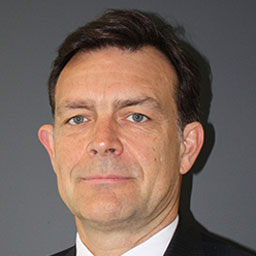
Meindert Boysen is a pharmacist. He also qualified in the subjects of health policy planning and financing at the London School of Hygiene and Tropical Medicine and the London School of Economics and Political Science.
According to the ISPOR website where Boysen was a speaker in 2018 he has worked in hospital pharmacy, in the pharmaceutical industry (for Eli Lilly & Co), for the King’s Fund, and at NICE, and their description of him (“a skilled communicator, effective negotiator, and extremely dedicated to ensuring that the programs he leads deliver on their key performance targets and budgets”) makes him sound very much like another finance-focussed health bureaucrat, and also apparently not a doctor who has ever treated anyone, ever.
Paul Chrisp
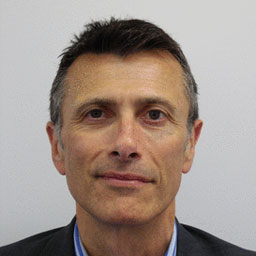
According to the NICE website, Paul Chrisp has the title of “Dr”, but appears to have trained as a pharmacist, and before starting at NICE in 2009, worked mainly in the medical publishing field as management and editorial directorship roles according to LinkedIn.
There isn’t an awful lot of information about Mr Chrisp about, but one thing that doesn’t seem obvious about him, is that he was or is a practicing medical doctor with any history of treating patients. Surprise!
Jane Gizbert

So Jane Gizbert has been with NICE since 2008 and has a BA and MA in the oxymoronically named field of “Political Science”. Before she joined NICE she was, according to Crunchbase, head of corporate communications at the Medical Research Council. She has worked in Canadian politics and also held senior positions at the Scout Association and the International Planned Parenthood Federation.
It seems like Ms Gizbert is also devoid of any form of medical experience and the closest she probably came to any form of doctor/patient procedure was managing the medically induced deaths of unborn babies.
Gillian Leng

Finally we have someone who is medically qualified. Gillian Leng CBE (AKA Lady Cosford) apparently got her degree in medicine back in the 1980s, although it’s not obvious just how much practical use that has had in use on actual patients. She succeeded Andrew Dillon as CEO of NICE in April 2020 and according to various sources including Wikipedia, she oversaw the creation of “new guidelines on COVID-19”.
She was married to Sir Paul Cosford who was responsible for the UK public health response to an “Ebola outbreak” in 2014, the “Zika virus” debacle in 2016, and the Skripal “poisonings” nonsense in 2018 amongst many other high-profile “public health” related projects and notably establishing the NHS Sustainable Development Unit where the anti-life “net zero” drivel is propagandised across all aspects of the nation’s health service.
But let’s not let Gillian exist in the shadow of her influential (and now deceased) husband, as she has an impressive CV of her own and is now the Dean of Education at the Royal Society of Medicine, amongst many others things. It seems she is an advocate for “gene therapy” having spoken about it in 2017 and also delivered a presentation at an event titled Digital Health 2019.
Judith Richardson
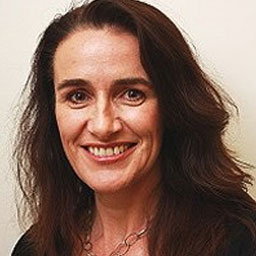
It turns out that Judith Richardson is also qualified in “medicine”, having studied at UCL. She has been with NICE since 2007 and is a big advocate for “investing in public health”. Again it is unclear just how much real-world application her medical degree has had, as it seems just as with Gillian Leng, it was more of a gateway into the bureaucracy of the “Public Health” machine.
Mark Salmon

No obvious doctor/patient stuff here with Mark Salmon. He has been with NICE since 2001 and according to his LinkedIn profile is currently very enthusiastic about Digital Health Technologies, and “horizon scanning systems”, a topic described in an NIH book titled “Safeguarding the Bioeconomy” from 2020 as something that “helps in assessing whether one is adequately prepared for future changes or threats”.
Salmon is the tech guy in this outfit, and his main interests align very well with all the “pandemic preparedness” stuff the WHO, the Gates Foundation et al are all obsessed with. Not a doctor though.
This group of seven people, only two of which are medically qualified (and neither of them have likely seen the business-end of a stethoscope in decades), oversaw and approved the guidelines that were implemented at the cost of thousands of the most vulnerable and systematically disempowered people in our society, elderly people in so-called “care homes”. They are credited with deciding to overrule all previous medical knowledge, experience and recommendations about the use of opioids and benzodiazepines, for things they had never been previously used for resulting in the incontrovertibly evidenced deaths of 1,000s.
For those unaware, those opioids and benzodiazepines such as Midazolam and Morphine are routinely used for “end of life” care, and would never have been previously prescribed for anyone with respiratory issues.
These people, like many other tools of the State, go about their well-paid business with the public largely oblivious to their existence, let alone the kinds of things they are responsible for. I think it’s good to know just who is responsible, or at least is the semi-public face of the responsibility. There may well be those passing instructions down to these “public health” apparatchiks, but for now they appear content to have their organisation credit them.
Of course those guidelines were just a part of the tyranny that was to follow, but they were an important part of the initial staging of the fake pandemic, creating a perfectly timed spike in deaths that was then used to justify much of what came afterwards.
There was also “computer modelling” that contributed what was claimed to be evidence to justify it too, and we’ll look at that in Part 2 which will be published soon.